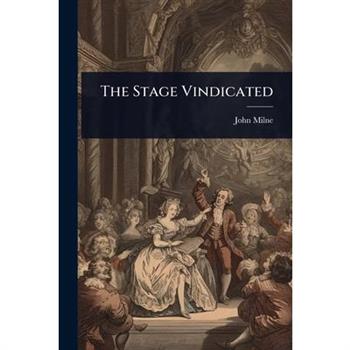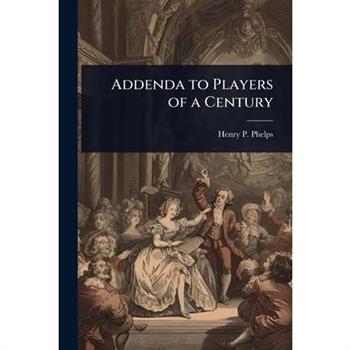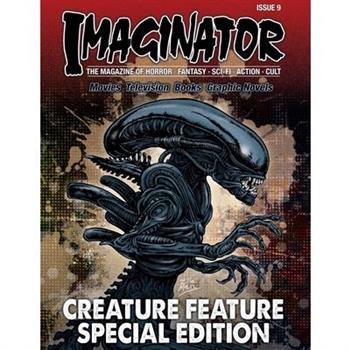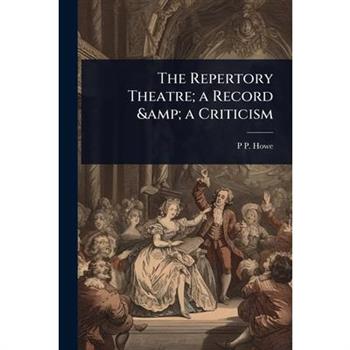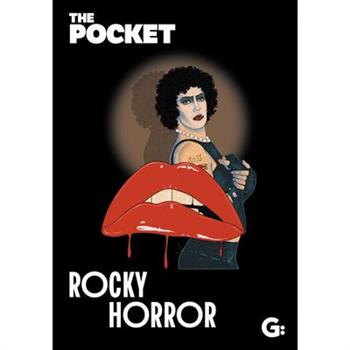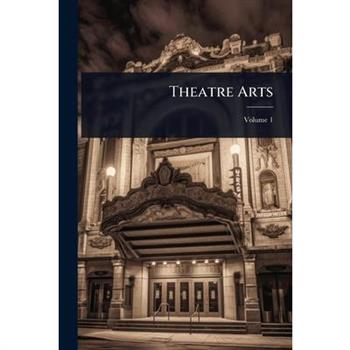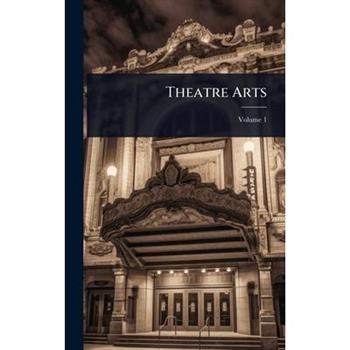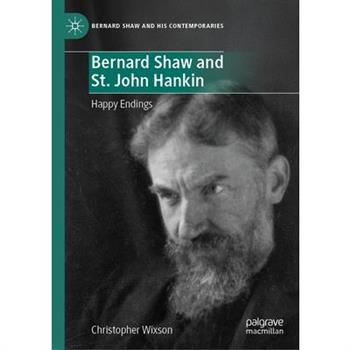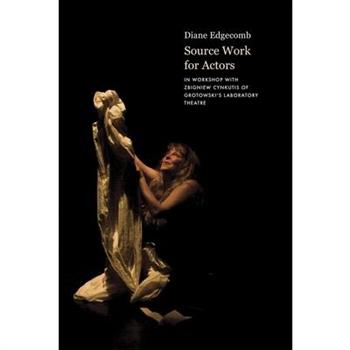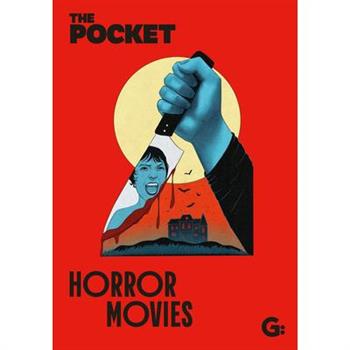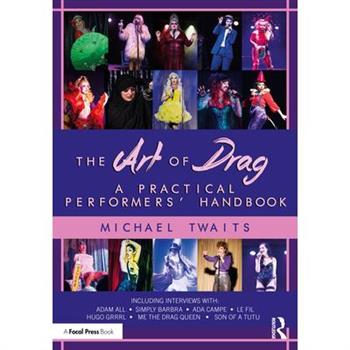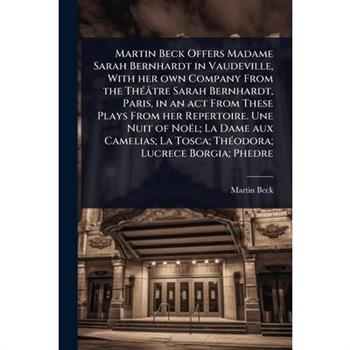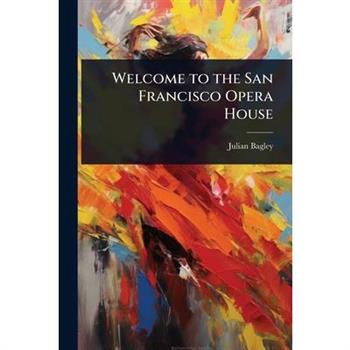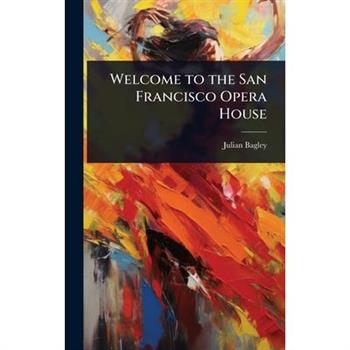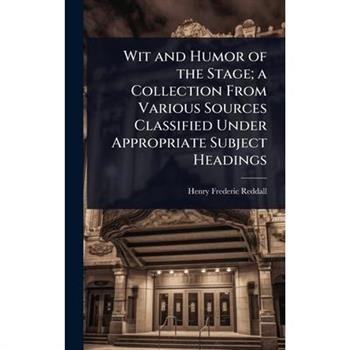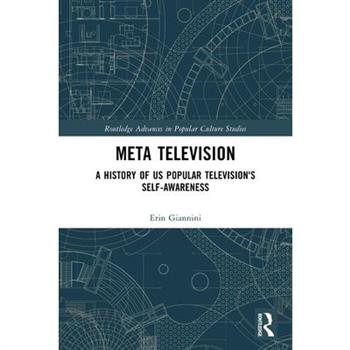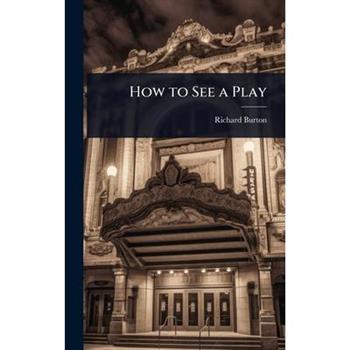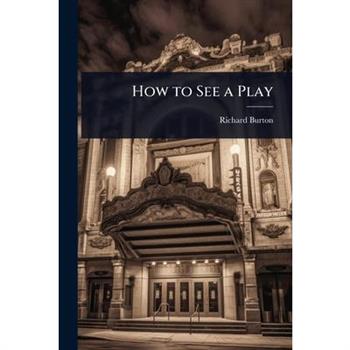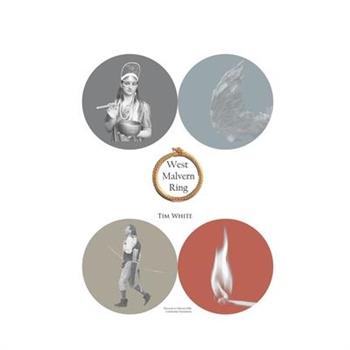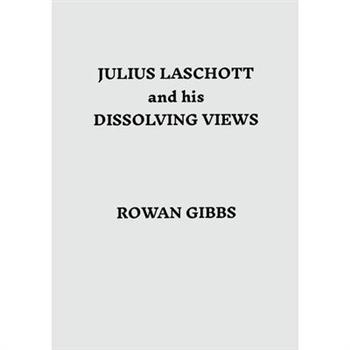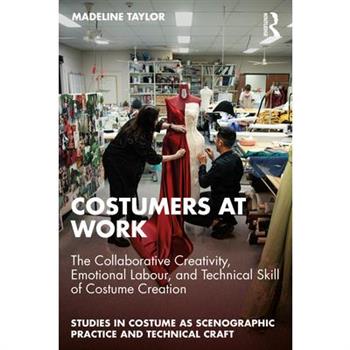Souvenir And Programme Of The Actors’ Fund Fair, Madison Square Garden, May 2d, 3d, 4th, 5th, 6th, 7th, 1892
This souvenir and programme commemorates the Actors' Fund Fair held at Madison Square Garden in New York City, May 2nd through 7th, 1892. It offers a glimpse into the theatrical world of the late 19th century and the charitable efforts of the Actors' Fund of America.The publication provides insights into the performances, personalities, and social scene of the era, making it a valuable resource for researchers and enthusiasts of theater history and American cultural studies. The fair itself was a significant event, showcasing the popularity of theater and the commitment of the acting community to supporting its own. This historical document offers a unique perspective on the intersection of entertainment, philanthropy, and society in Gilded Age America. A must-read for anyone interested in the history of the American stage and the Actors' Fund.This work has been selected by scholars as being culturally important, and is part of the knowledge base of civilization as we know it. This work was reproduced from the original artifact, and remains as true to the original work as possible. Therefore, you will see the original copyright references, library stamps (as most of these works have been housed in our most important libraries around the world), and other notations in the work.This work is in the public domain in the United States of America, and possibly other nations. Within the United States, you may freely copy and distribute this work, as no entity (individual or corporate) has a copyright on the body of the work.As a reproduction of a historical artifact, this work may contain missing or blurred pages, poor pictures, errant marks, etc. Scholars believe, and we concur, that this work is important enough to be preserved, reproduced, and made generally available to the public. We appreciate your support of the preservation process, and thank you for being an important part of keeping this knowledge alive and relevant.
THE MAKING OF LEGACY AFRICA FILM-- A medical doctor’s struggles to produce a Hollywood-style film
This book tells the inspiring story of a medical doctor on the brink of retirement who, against all odds, produced a film and took on a leading role, encouraging others to embrace change and pursue their passions.It serves as a guiding light, offering an in-depth exploration of the film's production and the transformative journey from doctor to filmmaker. This compelling narrative can shift your understanding of filmmaking and personal evolution.Readers are in for an extraordinary experience. You'll not only witness the remarkable production journey but also gain exclusive insights into the creative process that brought it all to life. This book invites you to appreciate the film from a fresh perspective.For aspiring filmmakers, this book is invaluable. It is not merely a story, but a source of inspiration and a practical roadmap that empowers you to turn your creative ideas into reality and achieve your aspirations.
Representing the New AI in Film and Television
The 21st-century has witnessed rapid advances in artificial intelligence, giving rise to a society at once hopeful but also mistrustful of the possibilities that this technology offers. Our hopes and anxieties have played out across a variety of media in recent times, but arguably nowhere more significantly than on our screens.This book explores a phenomenon, which it calls the new AI cinema and television, arguing that since the mid-2010s, a distinctly new phase in the representation of AI has occurred. Discussing films such as Blade Runner 2049, Ex Machina and Ghost in the Shell alongside television series such as Westworld and Humans, it argues that they have moved away from apocalyptic scenarios towards questions of personhood, consciousness, and social inclusion and exclusion. In doing so, it intervenes in some of today's most pressing debates, including gender representation, AI ethics, climate catastrophe, and the rights of artificially intelligent beings.
Outer Banks 16-Month 2025-2026 Wall Calendar with Bonus Poster
Explore the stormy, steamy shores of the Outer Banks with this 16-month calendar featuring full-color photographs from the sun-bleached hit Netflix teen drama series and a bonus poster. On their quest for lost treasure on an island of haves and have-nots, John B, Sarah, JJ, Pope, Kiara, and their friends and foes from the Outer Banks encounter hurricanes, drug smugglers, romance, murder, love triangles, police chases, and a great tan. Never has a teen drama been more thrilling or more jam-packed with adventure. This 16-month wall calendar features images from the hit Netflix teen drama that has taken the world by storm. Features include: 12" x 12" (12" x 24" open) Printed on FSC-certified paper with soy-based ink Plastic-free packaging Spans 16-months from September 2025-December 2026 Generous grid space for notes, appointments, and reminders Official major world holidays and observances Moon phases, based on Universal Time Planning spread for 2027 Bonus poster, measures 11.75" x 18.5"
The Stage Vindicated
The Stage Vindicated: A Defence Of The Actor, by John Milne, offers a compelling argument for the respectability and value of the acting profession. Published in the late 18th or early 19th century, this work provides invaluable insight into the social and artistic context of the theater during that period. Milne passionately defends actors against common prejudices, celebrating their skill, dedication, and the cultural significance of their craft. This book is not merely a defense; it is a historical document that sheds light on the evolving perception of the stage and its performers. Students of theater history, cultural studies, and literature will find Milne's arguments enlightening, offering a window into a world where the stage was both celebrated and scrutinized. Experience a vital contribution to the discourse surrounding the theater and its practitioners, preserved for modern readers to appreciate and learn from.This work has been selected by scholars as being culturally important, and is part of the knowledge base of civilization as we know it. This work was reproduced from the original artifact, and remains as true to the original work as possible. Therefore, you will see the original copyright references, library stamps (as most of these works have been housed in our most important libraries around the world), and other notations in the work.This work is in the public domain in the United States of America, and possibly other nations. Within the United States, you may freely copy and distribute this work, as no entity (individual or corporate) has a copyright on the body of the work.As a reproduction of a historical artifact, this work may contain missing or blurred pages, poor pictures, errant marks, etc. Scholars believe, and we concur, that this work is important enough to be preserved, reproduced, and made generally available to the public. We appreciate your support of the preservation process, and thank you for being an important part of keeping this knowledge alive and relevant.
The Stage Vindicated
The Stage Vindicated: A Defence Of The Actor, by John Milne, offers a compelling argument for the respectability and value of the acting profession. Published in the late 18th or early 19th century, this work provides invaluable insight into the social and artistic context of the theater during that period. Milne passionately defends actors against common prejudices, celebrating their skill, dedication, and the cultural significance of their craft. This book is not merely a defense; it is a historical document that sheds light on the evolving perception of the stage and its performers. Students of theater history, cultural studies, and literature will find Milne's arguments enlightening, offering a window into a world where the stage was both celebrated and scrutinized. Experience a vital contribution to the discourse surrounding the theater and its practitioners, preserved for modern readers to appreciate and learn from.This work has been selected by scholars as being culturally important, and is part of the knowledge base of civilization as we know it. This work was reproduced from the original artifact, and remains as true to the original work as possible. Therefore, you will see the original copyright references, library stamps (as most of these works have been housed in our most important libraries around the world), and other notations in the work.This work is in the public domain in the United States of America, and possibly other nations. Within the United States, you may freely copy and distribute this work, as no entity (individual or corporate) has a copyright on the body of the work.As a reproduction of a historical artifact, this work may contain missing or blurred pages, poor pictures, errant marks, etc. Scholars believe, and we concur, that this work is important enough to be preserved, reproduced, and made generally available to the public. We appreciate your support of the preservation process, and thank you for being an important part of keeping this knowledge alive and relevant.
Addenda to Players of a Century
"Addenda to Players of a Century: A Record of the Albany Stage, Including Notices of Prominent Actors who Have Appeared in America" offers a fascinating glimpse into the vibrant theatrical scene of 19th-century Albany, New York. Compiled by Henry P. Phelps, this addendum complements existing records of the Albany stage by providing additional details and insights into the actors and performances that graced its boards. The book serves as a valuable historical resource, shedding light on the careers of numerous performers who contributed to the development of American theater. It highlights the importance of local stages in nurturing talent and fostering a love of the dramatic arts.This volume is an essential addition to the libraries of theater historians, researchers, and anyone interested in the cultural heritage of Albany and the broader history of American performing arts. It is a testament to the enduring appeal of live theater and the captivating personalities who bring stories to life on stage.This work has been selected by scholars as being culturally important, and is part of the knowledge base of civilization as we know it. This work was reproduced from the original artifact, and remains as true to the original work as possible. Therefore, you will see the original copyright references, library stamps (as most of these works have been housed in our most important libraries around the world), and other notations in the work.This work is in the public domain in the United States of America, and possibly other nations. Within the United States, you may freely copy and distribute this work, as no entity (individual or corporate) has a copyright on the body of the work.As a reproduction of a historical artifact, this work may contain missing or blurred pages, poor pictures, errant marks, etc. Scholars believe, and we concur, that this work is important enough to be preserved, reproduced, and made generally available to the public. We appreciate your support of the preservation process, and thank you for being an important part of keeping this knowledge alive and relevant.
The Repertory Theatre; a Record & a Criticism
"The Repertory Theatre; a Record & a Criticism" offers a fascinating glimpse into the world of early 20th-century English theatre. P. P. Howe provides both a detailed record of the repertory theatre movement and insightful criticism of its productions and practices. This book is a valuable resource for anyone interested in the history of theatre, drama criticism, or the cultural landscape of the Edwardian era. It explores the challenges and triumphs of establishing and maintaining repertory companies, providing a nuanced perspective on the artistic and economic factors at play. Howe's analysis remains relevant for understanding the ongoing evolution of theatre and its role in society.This work has been selected by scholars as being culturally important, and is part of the knowledge base of civilization as we know it. This work was reproduced from the original artifact, and remains as true to the original work as possible. Therefore, you will see the original copyright references, library stamps (as most of these works have been housed in our most important libraries around the world), and other notations in the work.This work is in the public domain in the United States of America, and possibly other nations. Within the United States, you may freely copy and distribute this work, as no entity (individual or corporate) has a copyright on the body of the work.As a reproduction of a historical artifact, this work may contain missing or blurred pages, poor pictures, errant marks, etc. Scholars believe, and we concur, that this work is important enough to be preserved, reproduced, and made generally available to the public. We appreciate your support of the preservation process, and thank you for being an important part of keeping this knowledge alive and relevant.
Addenda to Players of a Century
"Addenda to Players of a Century: A Record of the Albany Stage, Including Notices of Prominent Actors who Have Appeared in America" offers a fascinating glimpse into the vibrant theatrical scene of 19th-century Albany, New York. Compiled by Henry P. Phelps, this addendum complements existing records of the Albany stage by providing additional details and insights into the actors and performances that graced its boards. The book serves as a valuable historical resource, shedding light on the careers of numerous performers who contributed to the development of American theater. It highlights the importance of local stages in nurturing talent and fostering a love of the dramatic arts.This volume is an essential addition to the libraries of theater historians, researchers, and anyone interested in the cultural heritage of Albany and the broader history of American performing arts. It is a testament to the enduring appeal of live theater and the captivating personalities who bring stories to life on stage.This work has been selected by scholars as being culturally important, and is part of the knowledge base of civilization as we know it. This work was reproduced from the original artifact, and remains as true to the original work as possible. Therefore, you will see the original copyright references, library stamps (as most of these works have been housed in our most important libraries around the world), and other notations in the work.This work is in the public domain in the United States of America, and possibly other nations. Within the United States, you may freely copy and distribute this work, as no entity (individual or corporate) has a copyright on the body of the work.As a reproduction of a historical artifact, this work may contain missing or blurred pages, poor pictures, errant marks, etc. Scholars believe, and we concur, that this work is important enough to be preserved, reproduced, and made generally available to the public. We appreciate your support of the preservation process, and thank you for being an important part of keeping this knowledge alive and relevant.
The Repertory Theatre; a Record & a Criticism
"The Repertory Theatre; a Record & a Criticism" offers a fascinating glimpse into the world of early 20th-century English theatre. P. P. Howe provides both a detailed record of the repertory theatre movement and insightful criticism of its productions and practices. This book is a valuable resource for anyone interested in the history of theatre, drama criticism, or the cultural landscape of the Edwardian era. It explores the challenges and triumphs of establishing and maintaining repertory companies, providing a nuanced perspective on the artistic and economic factors at play. Howe's analysis remains relevant for understanding the ongoing evolution of theatre and its role in society.This work has been selected by scholars as being culturally important, and is part of the knowledge base of civilization as we know it. This work was reproduced from the original artifact, and remains as true to the original work as possible. Therefore, you will see the original copyright references, library stamps (as most of these works have been housed in our most important libraries around the world), and other notations in the work.This work is in the public domain in the United States of America, and possibly other nations. Within the United States, you may freely copy and distribute this work, as no entity (individual or corporate) has a copyright on the body of the work.As a reproduction of a historical artifact, this work may contain missing or blurred pages, poor pictures, errant marks, etc. Scholars believe, and we concur, that this work is important enough to be preserved, reproduced, and made generally available to the public. We appreciate your support of the preservation process, and thank you for being an important part of keeping this knowledge alive and relevant.
The Phoenician Scheme
The screenplay for the new Wes Anderson film. THE PHOENICIAN SCHEME: The story of a family and a family business. Benicio del Toro is Anatole 'Zsa-zsa' Korda, one of the richest men in Europe. As he scrambles to consummate the most important project of his life, Zsa-zsa's opponents disrupt, obstruct, impede and cripple his enterprice by any means possible. Among the cast are Mia Threapleton as Sister Liesl, Zsa-zsa's daughter/a nun, and Michael Cera as Bjorn Lund, a tutor. Also starring are Tom Hanks, Bryan Cranston, Riz Ahmed, Mathieu Amalric, Jeffrey Wright, Scarlett Johansson, Richard Ayoade, Rupert Friend, Hope Davis and Benedict Cumberbatch. In addition to the full screenplay, this hardcover edition contains an interview with the writer/director Wes Anderson and a gallery of color images from the film.
Research and Development in British Theatre
This is the first book to explore the rich range of research and development (R&D) practices in contemporary British theatremaking. Featuring chapters by internationally recognised researchers, as well as interviews with innovative theatremakers, this book analyses the work of some of the most exciting theatre companies in Britain. This collection draws on conversations with Selina Thompson, Rosie Elnile, Third Angel and many others, offering hints and tips for your own creative practice. The book argues passionately for the funding of R&D, recognising its enormous significance to British theatre-making processes.
A Beginner’s Guide to Acting Methods
Wanting to understand the workings and methods of your favourite theatre practitioner? Look no further. This accessible guide summarizes the methods of 20 practitioners by collecting the most important features of their work and framing them so that even the novice actor will understand the material. Introducing us to the work of practitioners such as: Konstantin Stanislavski, Vsevolod Meyerhold, Bertolt Brecht, Michael Chekhov, Jacques Copeau, Maria Knebel, Lee Strasberg, Stella Adler, Sanford Meisner, Viola Spolin, Uta Hagen, Augusto Boal, Jerzy Grotowski, Tadashi Suzuki, and Anne Bogart among a number of others, the book sets readers on the path to discovering the methods they want to explore in greater depth. It does so through each chapter offering: - biographical information on each practitioner- a description of their method- suggestions for digging deeper and further exploration- journal and discussion questions- the opportunity for practical application with 3-6 hours' worth of in-class activities for instructors to use As a whole, the book seeks to offer an introduction to the many acting teachers and their methods in one place, demystifying terminology such as "biomechanics", "active analysis", "grounding" and "viewpoints", and introducing readers to the founders of the principles that make up modern acting.
Tragedy as a Travelling Form
Covering a broad historical spectrum from Greek Antiquity to the 21st century, this open access book asks how tragedy's formal features have impacted its travels, and how these travels have shaped its forms. Bringing together an international and interdisciplinary group of scholars of classics, English, German and French literature, postcolonial literature, musicology and theatre and performance studies, it provides a multifaceted overview of form processes related to travelling. It presents tragedy as a dynamic figuration that emerges, stabilizes and transforms through relocation and adaptation. The collection begins with the tragedies of Antiquity and then investigates the 17th and 18th centuries, from Shakespeare to Voltaire, as a laboratory for the formal transformation of tragedy, inextricably linked to the social and political changes of that time. The volume concludes with travelling tragedies in the 20th and 21st centuries. This section focuses on two former colonies on the African continent (Nigeria and South Africa) as an exemplary field for exploring form travel in the postcolonial, globalized present, in which tragic forms have become transcultural and are circulating so fast that they can no longer be easily related to concepts of locality, nation or continent. Arguing that the strategies that made tragedy portable also expanded its formal potential, this book also discusses the migration of tragedy as a process of form itself. While adaptation studies frequently focuses on the political dimensions of transcultural modifications of tragic plots, this book suggests that formal concerns are also political and social matters. The ebook editions of this book are available open access under a CC BY-NC-ND 4.0 licence on bloomsburycollections.com. Open access was funded by the University of Konstanz.
The Nosferatu Story
Director F.W. Murnau's Nosferatu: A Symphony of Horror, made in 1921 after the devastating Spanish Flu pandemic, has become the ultimate cult classic among horror film buffs around the world. For years, there was much speculation about the production background, the filmmakers and the star--German actor Max Schreck. This greatly expanded new edition, based upon rare sources and years of dedicated research, tells the complete story of how a group of occultists established a leading film company that would produce a momentous series of horror movies. Along the way, other classic German fantasy silents, such as The Golem, The Cabinet of Dr. Caligari and Metropolis, are discussed. Featured in this edition are photographs, documents and interviews, including one with Dacre Stoker, the great-grandnephew of Dracula author Bram Stoker.
The Pocket Rocky Horror
A campy celebration of the queer cult classic.The Rocky Horror Picture Show has had a lasting impact on cinema and pop culture, iconic for its catchy songs and unforgettable cast of characters. This pocket guide delves into the origins, evolution and legacy of the 1975 musical, exploring how audience participation was able to transform a box-office failure into a cult phenomenon. Packed with trivia, behind-the-scenes stories, interactive elements and more, this book is a celebration of the rebellious spirit of this campy classic.Let's do the Time Warp again! Gemini Pockets From little guides to soothe your soul to all-access passes to the lives of pop icons, and from quizzes and puzzles for literature lovers to books on food, nature, fashion and more, Gemini Pockets are the perfect fit for your life and interests.
Theatre Arts
Theatre Arts, Volume 1, published in 1917, offers a captivating glimpse into the world of early 20th-century theater. This volume serves as a valuable resource for students, scholars, and enthusiasts of dramatic literature and the performing arts. Explore insightful essays, critical analyses, and engaging discussions on various aspects of theatrical production, design, and performance. Delve into the historical context of the era and gain a deeper appreciation for the evolution of theater as an art form.This work has been selected by scholars as being culturally important, and is part of the knowledge base of civilization as we know it. This work was reproduced from the original artifact, and remains as true to the original work as possible. Therefore, you will see the original copyright references, library stamps (as most of these works have been housed in our most important libraries around the world), and other notations in the work.This work is in the public domain in the United States of America, and possibly other nations. Within the United States, you may freely copy and distribute this work, as no entity (individual or corporate) has a copyright on the body of the work.As a reproduction of a historical artifact, this work may contain missing or blurred pages, poor pictures, errant marks, etc. Scholars believe, and we concur, that this work is important enough to be preserved, reproduced, and made generally available to the public. We appreciate your support of the preservation process, and thank you for being an important part of keeping this knowledge alive and relevant.
Theatre Arts
Theatre Arts, Volume 1, published in 1917, offers a captivating glimpse into the world of early 20th-century theater. This volume serves as a valuable resource for students, scholars, and enthusiasts of dramatic literature and the performing arts. Explore insightful essays, critical analyses, and engaging discussions on various aspects of theatrical production, design, and performance. Delve into the historical context of the era and gain a deeper appreciation for the evolution of theater as an art form.This work has been selected by scholars as being culturally important, and is part of the knowledge base of civilization as we know it. This work was reproduced from the original artifact, and remains as true to the original work as possible. Therefore, you will see the original copyright references, library stamps (as most of these works have been housed in our most important libraries around the world), and other notations in the work.This work is in the public domain in the United States of America, and possibly other nations. Within the United States, you may freely copy and distribute this work, as no entity (individual or corporate) has a copyright on the body of the work.As a reproduction of a historical artifact, this work may contain missing or blurred pages, poor pictures, errant marks, etc. Scholars believe, and we concur, that this work is important enough to be preserved, reproduced, and made generally available to the public. We appreciate your support of the preservation process, and thank you for being an important part of keeping this knowledge alive and relevant.
Bernard Shaw and St. John Hankin
This book proposes a vibrant intertextual dialogue between St. John Hankin's manners comedies and what are considered Bernard Shaw's "minor" Edwardian comedies and, after the war, some of his most experimental "extravagant" plays. Engaging thematic topics ranging from philanthropy and parenting to marital alliances and comic endings, their dramaturgy was truly in conversation over form and content as they re-purposed one another in a vital wrangling to direct the creative evolution of modern British comedy. "This original study will no doubt draw attention to St. John Hankin's work, which may in turn receive further scrutiny from scholars, students, and theatre practitioners." Michel Pharand, Queen's University
One Night One Morning
A comedy about singles and social graces, after a night that went so right goes so wrong the next morning.Rachel and Greg wake up together after a night out on the town, much to the surprise of both.An awkward situation at the best of times, made all the more awkward as details from the previous night slowly filter back to them ...
The Pocket Horror Movies
Get ready to be spooked by this introductory guide to Horror movies. Horror in the movies comes in all shapes and sizes. It can be gooey, slimy, and misty. It can be solid, pointed, or blunt. It can be subtle, careful, and delicate. It can be brutal, graphic, and gruesome. It can jump out from a wall or be hidden under a bed. It can be long drawn out or over in a flash. It can make you laugh, cry and scream. So there's something for everyone. The Pocket Horror Movies provides a comphrensive guide to the top fifty horror movies of all time. Some are gory, some are subtle, but all of them are good, and will leave an impression on you, whether you like it or not... Gemini Pockets From little guides to soothe your soul to all-access passes to the lives of pop icons, and from quizzes and puzzles for literature lovers to books on food, nature, fashion, and more, Gemini Pockets are the perfect fit for your life and interests.
Screenplays by McGuinn
Screenplays for Running Away, Michael Dolan McCarthy, and Alice. Copyrighted material. First two are feature length; Alice is pilot length. Running Away has two strong female leads with focus on mother-daughter relationship as it falls apart, the teen runs away, and her mother races to find her. Both Running Away and Michael Dolan McCarthy have strong suspense lines. Michael Dolan McCarthy is a biracial teen dealing with grief, anger, fear, and his first serious romantic relationship as he tries to take care of his younger white siblings when their mother dies suddenly. His girlfriend is a strong supporting character as female lead. The multigenerational family situation also has him dealing with racism, prejudice and his biracial identity. Alice is a humorous multigenerational story of an uptight single mom of one teenage girl whose hippie father drops into their lives just when she's lost her job. Themes include political activism and family relationships. Purchase does NOT infer production rights. Please contact author sherimauthor@yahoo.com with title of script for production info.
The Art of Drag
Filled with a wide range of exercises and advice from working performers, The Art of Drag: A Practical Performers' Handbook is the ultimate guide for all drag kings, queens and queers who want to bring their best to the stage.
The 56
Nobody dies in football matches in fires. It doesn't happen.At 3.40pm on 11th May 1985, a small fire broke out in the main stand at Valley Parade football ground during the last game of the season. Within four minutes, the wooden structure was ablaze. Adapted solely from over sixty real-life testimonies, this pertinent piece of documentary theatre pays homage to the supporters who lost their lives in one of the darkest days in British footballing history. The 56 examines the solidarity, strength and community in the face of overwhelming tragedy.This edition of The 56was published to coincide with Lung Theatre's rehearsed reading staged on the 40th anniversary of this momentous event in the history of Bradford.
Martin Beck Offers Madame Sarah Bernhardt in Vaudeville, With her own Company From the Th?(c)璽tre Sarah Bernhardt, Paris, in an act From These Plays From her Repertoire. Une Nuit of No禱l; La Dame aux
An intriguing glimpse into the world of early 20th-century American vaudeville, this volume highlights the performances of the legendary Sarah Bernhardt on the Martin Beck circuit. Showcasing her repertoire from the Th?(c)璽tre Sarah Bernhardt in Paris, Bernhardt presented excerpts from acclaimed plays such as "Une Nuit of No禱l," "La Dame aux Camelias," "La Tosca," "Th?(c)odora," "Lucrece Borgia," and "Ph癡dre." This collection offers a unique perspective on Bernhardt's adaptation to the vaudeville stage and her enduring impact on American audiences. A valuable resource for theater historians and enthusiasts, it captures a moment when high art met popular entertainment, solidifying Bernhardt's status as a global icon.This work has been selected by scholars as being culturally important, and is part of the knowledge base of civilization as we know it. This work was reproduced from the original artifact, and remains as true to the original work as possible. Therefore, you will see the original copyright references, library stamps (as most of these works have been housed in our most important libraries around the world), and other notations in the work.This work is in the public domain in the United States of America, and possibly other nations. Within the United States, you may freely copy and distribute this work, as no entity (individual or corporate) has a copyright on the body of the work.As a reproduction of a historical artifact, this work may contain missing or blurred pages, poor pictures, errant marks, etc. Scholars believe, and we concur, that this work is important enough to be preserved, reproduced, and made generally available to the public. We appreciate your support of the preservation process, and thank you for being an important part of keeping this knowledge alive and relevant.
Wit and Humor of the Stage; a Collection From Various Sources Classified Under Appropriate Subject Headings
Wit and Humor of the Stage is a delightful collection of anecdotes, jokes, and humorous observations related to the theater. Gathered from various sources and carefully classified under appropriate subject headings, this anthology offers a fascinating glimpse into the lighter side of the performing arts. Compiled by Henry Frederic Reddall, this volume captures the essence of theatrical wit, providing readers with a treasury of amusing stories and clever remarks. Whether you are a theater enthusiast, a performer, or simply someone who appreciates a good laugh, "Wit and Humor of the Stage" promises hours of entertainment and a unique perspective on the world of theater.This work has been selected by scholars as being culturally important, and is part of the knowledge base of civilization as we know it. This work was reproduced from the original artifact, and remains as true to the original work as possible. Therefore, you will see the original copyright references, library stamps (as most of these works have been housed in our most important libraries around the world), and other notations in the work.This work is in the public domain in the United States of America, and possibly other nations. Within the United States, you may freely copy and distribute this work, as no entity (individual or corporate) has a copyright on the body of the work.As a reproduction of a historical artifact, this work may contain missing or blurred pages, poor pictures, errant marks, etc. Scholars believe, and we concur, that this work is important enough to be preserved, reproduced, and made generally available to the public. We appreciate your support of the preservation process, and thank you for being an important part of keeping this knowledge alive and relevant.
Welcome to the San Francisco Opera House
Welcome to the San Francisco Opera House offers a fascinating glimpse into one of the world's most iconic performing arts venues. This book explores the history and architecture of the San Francisco Opera House, detailing its significance as a cultural landmark. From its grand design to its role in showcasing world-class opera performances, this volume captures the essence of this magnificent building. A must-read for opera enthusiasts, architecture buffs, and anyone interested in the vibrant cultural landscape of San Francisco.This work has been selected by scholars as being culturally important, and is part of the knowledge base of civilization as we know it. This work was reproduced from the original artifact, and remains as true to the original work as possible. Therefore, you will see the original copyright references, library stamps (as most of these works have been housed in our most important libraries around the world), and other notations in the work.This work is in the public domain in the United States of America, and possibly other nations. Within the United States, you may freely copy and distribute this work, as no entity (individual or corporate) has a copyright on the body of the work.As a reproduction of a historical artifact, this work may contain missing or blurred pages, poor pictures, errant marks, etc. Scholars believe, and we concur, that this work is important enough to be preserved, reproduced, and made generally available to the public. We appreciate your support of the preservation process, and thank you for being an important part of keeping this knowledge alive and relevant.
Martin Beck Offers Madame Sarah Bernhardt in Vaudeville, With her own Company From the Th?(c)璽tre Sarah Bernhardt, Paris, in an act From These Plays From her Repertoire. Une Nuit of No禱l; La Dame aux
An intriguing glimpse into the world of early 20th-century American vaudeville, this volume highlights the performances of the legendary Sarah Bernhardt on the Martin Beck circuit. Showcasing her repertoire from the Th?(c)璽tre Sarah Bernhardt in Paris, Bernhardt presented excerpts from acclaimed plays such as "Une Nuit of No禱l," "La Dame aux Camelias," "La Tosca," "Th?(c)odora," "Lucrece Borgia," and "Ph癡dre." This collection offers a unique perspective on Bernhardt's adaptation to the vaudeville stage and her enduring impact on American audiences. A valuable resource for theater historians and enthusiasts, it captures a moment when high art met popular entertainment, solidifying Bernhardt's status as a global icon.This work has been selected by scholars as being culturally important, and is part of the knowledge base of civilization as we know it. This work was reproduced from the original artifact, and remains as true to the original work as possible. Therefore, you will see the original copyright references, library stamps (as most of these works have been housed in our most important libraries around the world), and other notations in the work.This work is in the public domain in the United States of America, and possibly other nations. Within the United States, you may freely copy and distribute this work, as no entity (individual or corporate) has a copyright on the body of the work.As a reproduction of a historical artifact, this work may contain missing or blurred pages, poor pictures, errant marks, etc. Scholars believe, and we concur, that this work is important enough to be preserved, reproduced, and made generally available to the public. We appreciate your support of the preservation process, and thank you for being an important part of keeping this knowledge alive and relevant.
Welcome to the San Francisco Opera House
Welcome to the San Francisco Opera House offers a fascinating glimpse into one of the world's most iconic performing arts venues. This book explores the history and architecture of the San Francisco Opera House, detailing its significance as a cultural landmark. From its grand design to its role in showcasing world-class opera performances, this volume captures the essence of this magnificent building. A must-read for opera enthusiasts, architecture buffs, and anyone interested in the vibrant cultural landscape of San Francisco.This work has been selected by scholars as being culturally important, and is part of the knowledge base of civilization as we know it. This work was reproduced from the original artifact, and remains as true to the original work as possible. Therefore, you will see the original copyright references, library stamps (as most of these works have been housed in our most important libraries around the world), and other notations in the work.This work is in the public domain in the United States of America, and possibly other nations. Within the United States, you may freely copy and distribute this work, as no entity (individual or corporate) has a copyright on the body of the work.As a reproduction of a historical artifact, this work may contain missing or blurred pages, poor pictures, errant marks, etc. Scholars believe, and we concur, that this work is important enough to be preserved, reproduced, and made generally available to the public. We appreciate your support of the preservation process, and thank you for being an important part of keeping this knowledge alive and relevant.
Marvel Studios’ the Infinity Saga - Doctor Strange: The Art of the Movie
The official art book for the movie Doctor Strange, the 13th title reissue of the 22-book Marvel Studios' The Infinity Saga series published as a resized matching set. The 13th of the 22 Marvel Cinematic Universe Infinity Saga film titles being published as a complete set. When a terrible accident befalls extraordinary surgeon Dr. Stephen Strange, he'll do anything to regain mobility in his crippled hands. His journey will take him to unbelievable realms and bring him face-to-face with petrifying dangers. Explore the fantastic worlds of Doctor Strange with exclusive concept artwork and in-depth analysis from the filmmakers. Go behind the scenes in this deluxe keepsake volume as Marvel once again brings its strange history to the silver screen! Here is everything you need to know about the making of the movie from all the key players--including director Scott Derrickson, Marvel Studios President Kevin Feige, along with the talented cast, special-effects gurus, concept illustrators, visual-effects designers, and storyboard artists who worked on the set and behind the scenes to create the art of Doctor Strange.
Wit and Humor of the Stage; a Collection From Various Sources Classified Under Appropriate Subject Headings
Wit and Humor of the Stage is a delightful collection of anecdotes, jokes, and humorous observations related to the theater. Gathered from various sources and carefully classified under appropriate subject headings, this anthology offers a fascinating glimpse into the lighter side of the performing arts. Compiled by Henry Frederic Reddall, this volume captures the essence of theatrical wit, providing readers with a treasury of amusing stories and clever remarks. Whether you are a theater enthusiast, a performer, or simply someone who appreciates a good laugh, "Wit and Humor of the Stage" promises hours of entertainment and a unique perspective on the world of theater.This work has been selected by scholars as being culturally important, and is part of the knowledge base of civilization as we know it. This work was reproduced from the original artifact, and remains as true to the original work as possible. Therefore, you will see the original copyright references, library stamps (as most of these works have been housed in our most important libraries around the world), and other notations in the work.This work is in the public domain in the United States of America, and possibly other nations. Within the United States, you may freely copy and distribute this work, as no entity (individual or corporate) has a copyright on the body of the work.As a reproduction of a historical artifact, this work may contain missing or blurred pages, poor pictures, errant marks, etc. Scholars believe, and we concur, that this work is important enough to be preserved, reproduced, and made generally available to the public. We appreciate your support of the preservation process, and thank you for being an important part of keeping this knowledge alive and relevant.
Meta Television
This book explores the ways in which the current metatextual turn, in both the usual genres in which it appears and its movement into drama and sitcom, represents the next turn in television's inherent self-awareness.
Star Trek: Discovering the TV Series
Join a two-year mission through Star Trek's highs, lows, and behind-the-scenes revelations from Deep Space Nine to Voyager.How well do you know Star Trek?Lifelong science fiction fan, podcaster and author Tom Salinsky decided that the answer was "not well enough", and so at the beginning of 2022, he embarked on a two-year mission to watch everything from the start of The Original Series to the end of Enterprise, at the rate of one episode per day. This book is the second part of that odyssey, covering Deep Space Nine, and the first two seasons of Voyager plus the first two Next Generation movies.As well as having fun saluting the show's triumphs, cringing at its lapses in taste, and admiring its willingness to swing for the fences, there's lots of fascinating behind-the-scenes information here. Was Morn really such a chatterbox? Why was Deep Space Nine allowed to do so much serialisation? Did Star Trek need Michael Dorn more than Michael Dorn needed Star Trek? Just whatever happened to Genevi癡ve Bujold? How is Nicholas Locarno related to Tom Paris?But you'll also get the benefit of a complete overview of these hugely successful and beloved spin-offs, which expanded and extended the Star Trek universe to new quadrants, new eras and new modes of storytelling. Plus there are contributions from notable fans, writers, authors and experts, giving their own perspectives on these classic episodes.Whether you're a die-hard fan, a casual viewer, or just someone interested in the history of television, you'll adore coming on this daily journey though the highs and lows of one of the most significant and much-loved media properties in the world.**Praise for Volume I: ****The Original Series, The Animated Series and The Next Generation**"Funny, absorbing, perceptive and a fine reminder of the wealth of work that Star Trek has produced through the decades." - Critical Popcorn"Even if you're not the world's biggest Star Trek fan, the way this book is written will certainly keep you entertained." - Total Entertainment"Whether you're a devoted aficionado or a casual viewer, this book offers an immersive experience." - Kuriositas.com"An honest labour of love from a lifelong sci-fi specialist, and even gives the episodes that fail a fair hearing." - Lou Reviews
Something Like a Drug
Explores in the words of those who participated in the growth of this theater hybrid how theatresports sprang to life and has grown into an international league spanning four continents.
The Darkroom
"One must make films with this knowledge: there's no point anymore. Let film meet its end, that's the only cinema." The Darkroom contains the script for Marguerite Duras's 1977 radically experimental film Le camion (The Truck). Between images of a truck in motion, juxtaposed voiceovers, and cutaways to Duras in conversation with G矇rard Depardieu, Le camion turns the art of film into a means of enabling the viewer to engage multiple faculties--not only the visual and the aural, but also memory, imagination, and desire. Also included here is a series of short essays in which Duras makes provocative connections between film and textuality, as well as a fascinating dialogue with Michelle Porte. Together amounting to a crucial contribution to the field of film theory, these texts make brilliantly apparent the depth and integrity of Duras's aesthetic, philosophical, and political thinking.
How to See a Play
璽€œHow to See a Play璽€ by Richard Burton offers a comprehensive guide to understanding and appreciating the theatrical arts. Written in a clear and accessible style, this book explores the essential elements of dramatic performance, from the playwright's craft to the actor's interpretation and the audience's role. Burton delves into various aspects of theater, including plot construction, character development, and the use of dramatic conventions. Designed for both casual theatergoers and serious students of drama, 璽€œHow to See a Play璽€ provides valuable insights into the art of play-watching. It encourages readers to engage actively with the performance, fostering a deeper understanding and enjoyment of the theatrical experience. This book remains a timeless resource for anyone seeking to enhance their appreciation of the stage.This work has been selected by scholars as being culturally important, and is part of the knowledge base of civilization as we know it. This work was reproduced from the original artifact, and remains as true to the original work as possible. Therefore, you will see the original copyright references, library stamps (as most of these works have been housed in our most important libraries around the world), and other notations in the work.This work is in the public domain in the United States of America, and possibly other nations. Within the United States, you may freely copy and distribute this work, as no entity (individual or corporate) has a copyright on the body of the work.As a reproduction of a historical artifact, this work may contain missing or blurred pages, poor pictures, errant marks, etc. Scholars believe, and we concur, that this work is important enough to be preserved, reproduced, and made generally available to the public. We appreciate your support of the preservation process, and thank you for being an important part of keeping this knowledge alive and relevant.
How to See a Play
璽€œHow to See a Play璽€ by Richard Burton offers a comprehensive guide to understanding and appreciating the theatrical arts. Written in a clear and accessible style, this book explores the essential elements of dramatic performance, from the playwright's craft to the actor's interpretation and the audience's role. Burton delves into various aspects of theater, including plot construction, character development, and the use of dramatic conventions. Designed for both casual theatergoers and serious students of drama, 璽€œHow to See a Play璽€ provides valuable insights into the art of play-watching. It encourages readers to engage actively with the performance, fostering a deeper understanding and enjoyment of the theatrical experience. This book remains a timeless resource for anyone seeking to enhance their appreciation of the stage.This work has been selected by scholars as being culturally important, and is part of the knowledge base of civilization as we know it. This work was reproduced from the original artifact, and remains as true to the original work as possible. Therefore, you will see the original copyright references, library stamps (as most of these works have been housed in our most important libraries around the world), and other notations in the work.This work is in the public domain in the United States of America, and possibly other nations. Within the United States, you may freely copy and distribute this work, as no entity (individual or corporate) has a copyright on the body of the work.As a reproduction of a historical artifact, this work may contain missing or blurred pages, poor pictures, errant marks, etc. Scholars believe, and we concur, that this work is important enough to be preserved, reproduced, and made generally available to the public. We appreciate your support of the preservation process, and thank you for being an important part of keeping this knowledge alive and relevant.
Backstaging Modern Chinese Theatre
Modern Chinese theatre once entailed a variety of forms, but now it primarily refers to spoken drama, or huaju. Backstaging Modern Chinese Theatre looks beyond scripts to examine visuality, acoustics, and performance between the two World Wars, the period when huaju gained canonical status. The backstage in this study expands from being a physical place offstage to a culturally and historically constructed social network that encompasses theatre networks, academies, and government institutions--as well as the collective work of dramatists, amateurs, and cultural entrepreneurs. Early huaju was not a mere imitation of Western realist theatre, as it is commonly understood, but a creative synthesis of Chinese and Western aesthetics. Charting huaju's evolution from American colleges to China's coastal cities and then to its rural hinterland, Man He demonstrates how the formation of modern Chinese theatre challenges dominant understandings of modernism and brings China to the center of discussions on transnational modernities and world theatres.
Julius Laschott and his Dissolving Views
Julius Laschott was best known for his "dissolving views" but he began as and remained a magician, performing sleight of hand and "chemical and physical experiments" in his shows. Born Joseph Tschernoth in Ljubljana he studied Physics in Graz and began his stage career in 1842. His dissolving views were favourably compared to D繹bler's and his skill in magic was said to rival that of both D繹bler and Bosco. There is also new information here on D繹bler and his Oxyhydrogen microscope and on the career of another rival Carl Schuh.
Rum
This plaster will outlive me. I shape these rooms but in turn they have moulded me. Hiding secrets. Weak spots made to look strong.Meet Danny, plastering since he was a kid, he's not scared of anything, he's RUM. Danny's been up all night and now he's rushing to finish a job before he has to give the speech of his life. RUMis a darkly humorous and powerful new play that wrestles with masculinity, mental health and addiction in the trade.RUMis published to coincide with the production at ARC Stockton Arts Centre and subsequent UK Tour in April-June 2025.
A History of Intimacy Professionals in Entertainment
A History of Intimacy Professionals in Entertainment is the first book that explores the evolution of intimacy coordinators, choreographers and directors in the performing arts, highlighting the history of their critical role in fostering safe(r) and respectful environments on set and in theaters.
Communication for Effective Stage Management
Communication for Effective Stage Management: A Collaborative Production Tool provides a comprehensive examination of communication theory through the lens of effective stage management and offers ideas and methods for stage managers to enhance their communicative presence throughout a theatrical process.
Costumers at Work
Costumers at Work: The Collaborative Creativity, Emotional Labour, and Technical Skill of Costume Creation explores the various forms of work carried out in the costume workshop by the myriads of skilled professionals who transform ideas and sketches into the wearable costumes seen on stage.
The Screen Chills Companion, 1931-1939
This first volume of a two-volume set covers every film released during the "first wave" of Hollywood horror (1931-1939), providing 74 chilling entries with important historical context, frightening facts and terrifying trivia. Each entry supplies a detailed production history (derived from trade-publication reports), contemporary press hype, cast, scenario, critiques and behind-the-scenes production tidbits. Postscripts detailing noteworthy events that followed a picture's theatrical run, such as sequels or award nominations, also are featured. An appendix presents a full roster of horror films that came out of New York instead of Hollywood. This complete history of the first wave of Hollywood horror is thoroughly illustrated and meticulously documented.









